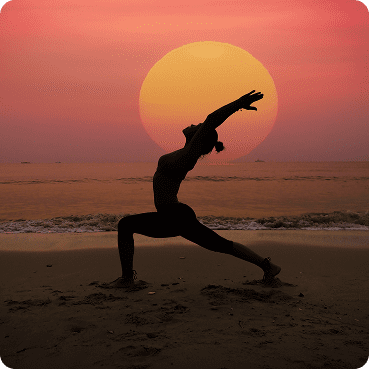Edit Content

When the very first sunbeam touched the spires of the temple, the village heard the far-calling blast of the conch; women in India addressed the sun and did not talk. They were talking in action barefoot, dancing on stone courtyards, and the wind was a thread in the bodies of the dancers, like trees in the morning dew. There was also one such holy gesture, but in a more subtle, celestial form—Bhujangasana, the Cobra Pose, an expression of force, beauty, and awakening.
Among these sacred forms were those of power and stillness, as well as Bhujangasana, also known as the Cobra Pose, which is a silent homage to the sun and its inner strength.
In this hurried modern world, our bodies curl around themselves; backs and shoulders hunch over as we sit hours on our phones, long hours at a keyboard, or under the unseen weight of stress. Years of this posture are able to invite a chain of suffering: sneezes in the lower back, sore shoulders, headaches, and even shallow breathing.
And on a more subdued level, there is the caved-in chest that turns the heart away from the infinite potential of existence.
But what if there were a way to slowly unfurl again—physically, emotionally, and spiritually?
Bhujangasana is that way.
A mindful, daily practice of Cobra Pose can gently reverse years of forward-slumping. It strengthens the deep stabilizing muscles of the spine, helps prevent or ease lower back discomfort, and restores the openness we were born with.

Bhujangasana is a special posture in Hatha Yoga that appears in the 15th-century text Hatha Yoga Pradipika (Light on Hatha Yoga). There it is explained as an effective power to arouse the latent Kundalini energy—the inner serpent power coiled up at the base of the spine.
The posture appears to an observer from the street as resembling that of a cobra, which is both rooted and poised while being elastic and sturdy. Centuries ago, yogis utilized it as a practice to strengthen the spine, energize their life forces, and unify their body, mind, and spirit. Its relevance has only grown, for in the language of yoga, the cobra’s rise is the human soul’s rise.
“Rise as a serpent rises—steady and regal; so should the Cobra Pose be performed.” (Gheranda Samhita, 2.42)
From Sanskrit, bhujanga means “serpent” and asana means “pose.” In the posture, the body rises from the ground as if a cobra in alert beauty.
Reclining backbends are another group that Bhujangasana fits into. It is an important pose in Surya Namaskar (Sun Salutation). It brings together the stability of the ground and the space of the sky.
Observed in the early morning hours, bhujangasana yoga will make you feel that you are conversing with the land that holds you and the horizon calling to you. It makes the spine harder and the chest and shoulders stretched, and it also activates the abdominal organs. To women—who usually are found bending over a desk, or a kitchen, or a cradle—it brings daily alleviation of strain of position and a touch of warning against buckling.
Bhujangasana asana is ideally performed in the morning on an empty stomach, and even more ideally, it is a slow and constant flow of breath that allows bhujangasana asana its greatest gifts.

The body experiences the first transformation. When you ascend into bhujangasana yoga, your spine rises as slow and strong as currents —strong, respectfully yielding, deliberate and palpable.
Over weeks, the rewards multiply—movement feels lighter, bending becomes easier, and strength becomes a quiet, constant companion.
Other than muscles and bones, the advantages of bhujangasana address the mind and emotions.
As time passes, this practice evolves from being merely an exercise to becoming a morning routine, similar to standing tall internally before engaging with the outside world.

Avoid or modify bhujangasana yoga if:

From the sunlit courtyards of ancient India to quiet living rooms today, Bhujangasana holds the same promise: the ability to rise with dignity, to greet life with an open chest and an open heart.
The information of bhujangasana is not just instruction—it’s inheritance. With every rise of the chest, it is renewed: the position, the breathing, the heart. It comes with a tighter body and a mellowed mind, but the greatest gift it has to offer is the realization that, even from the most rooted of positions, we can come out.
If you are new, begin with one or two gentle rounds each morning. If you are seasoned, return daily, letting it anchor and uplift you.
“Rise as a serpent rises—steady and regal; so should the Cobra Pose be performed.” (Gheranda Samhita, 2.42, translated)
Tomorrow morning, just put your hands under your shoulders, push up slowly and deeply, and take a moment to think—you were always meant to rise up, too.
15–30 seconds for beginners, up to 1 minute with practice.
Indeed, it is possible when combined with a balanced way of life.
For mild cases, the answer is yes—with professional guidance.
Absolutely, especially in the morning.
In Bhujangasana, hips stay on the mat; in Upward Dog, they lift.
Avoid after the first trimester. Talk to your Gynecologist about the same!
The best time to practice bhujangasana asana is early in the morning, before eating.
Quick Links
Subscribe Our Newlestter
Get daily inspiration, trending stories, and self-care tips crafted for her.